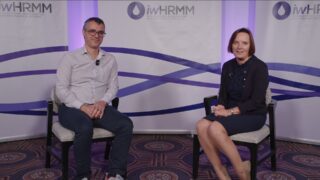It looks like we had three great speakers at the session. Dr Orlowski started with protein degraders and PROTACs. I think protein degraders have been one of the success points in myeloma treatment. Now with the PROTACs and especially the way he mentioned, like using the AI and other state-of-the-art technologies that we have today, it’s very exciting that we can actually have more options and we can actually develop new treatment approaches to myeloma...
It looks like we had three great speakers at the session. Dr Orlowski started with protein degraders and PROTACs. I think protein degraders have been one of the success points in myeloma treatment. Now with the PROTACs and especially the way he mentioned, like using the AI and other state-of-the-art technologies that we have today, it’s very exciting that we can actually have more options and we can actually develop new treatment approaches to myeloma. That was very exciting to see. And we are really looking forward in the near future how these technological advancements will affect the available targets and available treatments to us.
Dr Stewart’s talk was rightly focusing on very key points like how we can actually come up with new risk stratifications, how we can actually find the early events, the very first events, and how we can actually use some of the genomic alterations that lead to dysregulation of certain mechanisms in myeloma. We have been making good progress as he pointed out, but we are still lacking the ability to use some of these alterations and his talk was rightly pointing all these as the future targets.
We had Dr Raje at the end speaking on the CAR constructs as she has pointed out that this is a field that we are seeing magnificent developments in recent history. There are many different CARs that are available to all of us today. She has been pointing that there are now fifth-generation CARs, there are many targets, and she was pointing that how we use these existing technologies, existing platforms, and then recombine like bispecifics trispecifics specifics to overcome the diseases is still an unanswered question. So we are still, I think, at the early phase of learning resistance, at the early phase of learning how to use these tools in a most efficient way, and in the near future, we will be seeing a lot of developments in this space as well.
This transcript is AI-generated. While we strive for accuracy, please verify this copy with the video.















